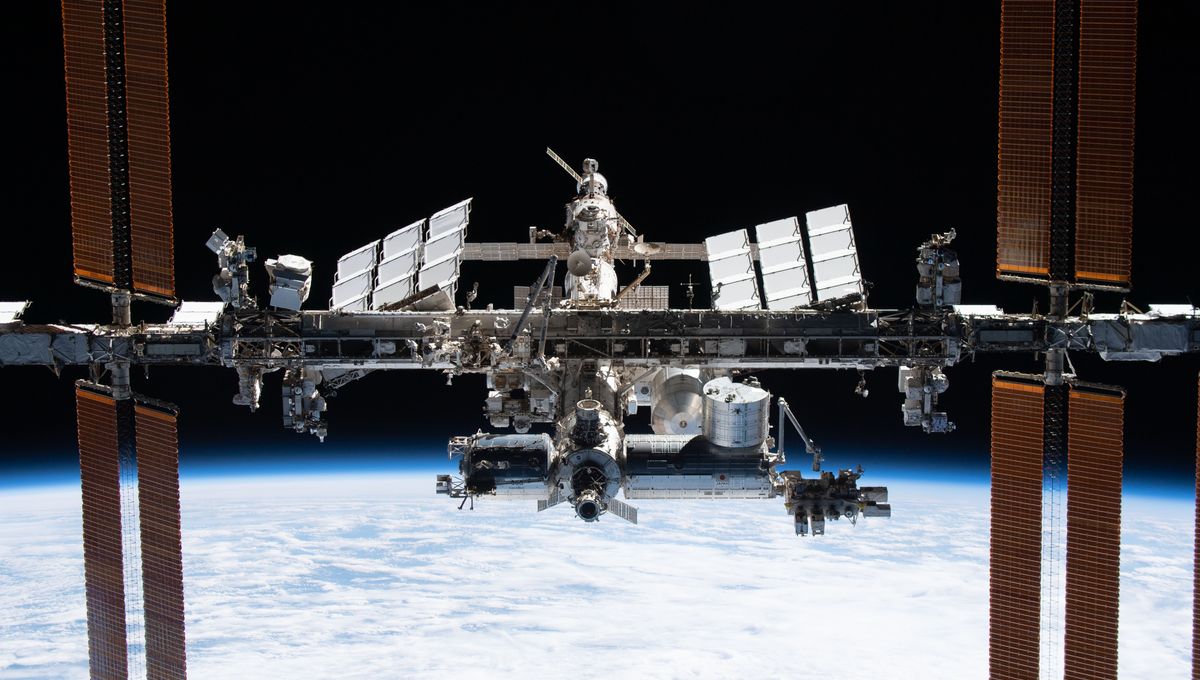
It’s been an eventful week on the International Space Station (ISS). First, a spacewalk was canceled when coolant water spread everywhere in the airlock. Then astronauts had to take shelter in the spacecraft they used to travel into space because of a report of potentially dangerous space debris approaching.
The cause of the debris was a defunct satellite breaking up. Resurs-P1 was a Russian commercial Earth observation satellite that worked until 2021, when it was decommissioned due to a failure of onboard equipment. It had not been designed with deorbiting in mind, so it passively continued to orbit at about 355 kilometers (221 miles) above our head. It would have eventually lost altitude and burned up, but something else happened on Wednesday.
The satellite broke apart into what is estimated to be over 100 pieces of traceable debris, according to satellite tracking service LeoLabs. Their orbit is not close to the ISS, which orbits at an altitude between 413 and 422 kilometers (257 and 262 miles). Still, some of the debris might end up crossing the path of the ISS, so it was decided to shelter the astronauts as a precaution.
“Beginning around 8:45 p.m. EDT on Wednesday, June 26 NASA instructed crews aboard the space station to shelter in their respective spacecraft as a standard precautionary measure after it was informed of a satellite break-up at an altitude near the station’s earlier Wednesday. Mission Control continued to monitor the path of the debris, and after about an hour, the crew was cleared to exit their spacecraft and the station resumed normal operations,” NASA wrote in a blog post.
On Thursday afternoon, LeoLabs reported at least 180 pieces of debris being tracked, with the number expected to grow. It is unclear what has caused the sudden breaking apart of the satellite, but LeoLabs hopes to be able to discern a cause.
It is possible that another piece of space junk hit Resurs-P1, leading to the production of a swarm of debris. Resurs-P1 is not a small object; it is roughly the size of a van. A van moving at 8 kilometers (5 miles) per second. Even a small object hitting it would have a lot of momentum and do a lot of damage.
Space junk collision is a serious concern, as it might lead to the Kessler Syndrome, a cascade of debris that causes other debris, making a specific orbital region inaccessible. There is a strong push for satellites to have a deorbiting plan now to avoid exactly this kind of situation.
Source Link: Astronauts Take Shelter As Debris From Russian Satellite Breakup Swarms